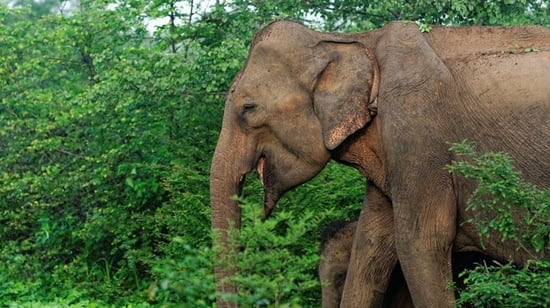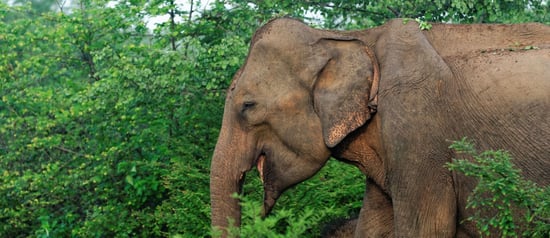
Understanding the emotional lives of elephants
News
Helen Proctor, our Sentience Manager, talks about observing elephants in the wild as the best way to fully experience these incredible animals.
They are at their most awe-inspiring in the wild, as you can see just how emotionally complex and intelligent they are.
Highly empathetic animals
Elephants are considered to be one of the world’s most empathic species.
Scientists have observed many cases of maternal and non-maternal elephants defending calves from dangerous situations such as chasing predators away, stopping aggressive play fights or pushing other individuals away. Such situations do not always elicit distress or pain signals in the calf, and so the protector elephants are predicting their potential distress, rather than just responding to cues.
Byrne and colleagues (2008) suggest that to do this the elephants draw upon their past experiences and use this to consider the calf’s emotional state, they then act to prevent the situation escalating and causing the calf distress. This behavior is very complex, and few species are known to be able to attribute and consider another’s feelings in this way (Byrne et al., 2008).
They share strong social bonds
African elephants have huge complicated social groups ranging from tens to hundreds, whereas Asian elephants are often thought to be the loner elephants. Recent research however has shown this is not actually the case. Their social lives are so complex it has taken years of research to understand them, and we are still continuing to learn.
Female Asian elephants will have anywhere from 10-50 friends, but they may not see them for long periods of time (de Silva et al., 2011), instead they will communicate with them both chemically and acoustically (Soltis et al., 2005).
And recognise themselves in the mirror
It is not surprising to hear that as well as being incredibly emotional and social, elephants are considered to be one of the world’s most intelligent species (Plotnik et al., 2011). Asian elephants have been found to pass the mirror test (Plotnik et al., 2006). Marks are placed on the animal to see whether they use the mirror to inspect themselves.
When they successfully inspect themselves, this is considered to be evidence of a high level of intelligence. Only some species are known to be capable of it: dolphins (Reiss & Marino, 2001) and chimpanzees (Menzel et al., 1985). And the ability doesn’t emerge in human children until 18-24 months of age (Plotnik et al., 2009).
Making the most of their environment
Both Asian and African elephants have been seen to use tools for various things from swatting flies with branches, to burying the dead with vegetation (Chevalier-Skolnikoff & Liska, 1993; Hart et al., 2001).
There are also many incredible anecdotes of elephant tool use. Rangers once saw African elephants break off nearby branches and dump them on to a new road, rendering it closed, repeating this four times when the branches were removed. Poignantly the road was built for the elephant cull (Chevalier-Skolnikoff & Liska, 1993).
There is still so much to learn about these fascinating animals, and scientists have only really scratched the surface when it comes to understanding how intelligent and expressive elephants are.
But not all elephants enjoy this freedom
Sadly, elephants used for tourist rides do not have the chance to truly express these behaviors. Their lives in these facilities are so far removed from what they should be; they are almost entirely different animals.
We want to see elephants living in the natural environments they’re entitled to and we're working with responsible travel companies to make this happen. More than 80 companies have pledged to stop selling elephant rides and shows to tourists.
We need to take elephant rides off Australian travel itineraries this summer. The more people who pledge to be animal friendly tourists, the less demand there will be for cruel animal entertainment and the more the tourism industry will take notice. Please sign the pledge and share with your family and friends, get them to sign the pledge too
References and further reading
There is still so much to learn about these fascinating animals, and scientists have only really scratched the surface when it comes to understanding how intelligent and expressive elephants are.
Elephant facts
Did you know that elephants can live up to 70 years in the wild, however their lifespan in captivity is generally shorter?
Our wildlife work
Around the world, wild animals are being exploited. They’re hunted down, trapped and farmed in captivity, all to be sold and abused for entertainment, medicine, fashion, pets and products.


